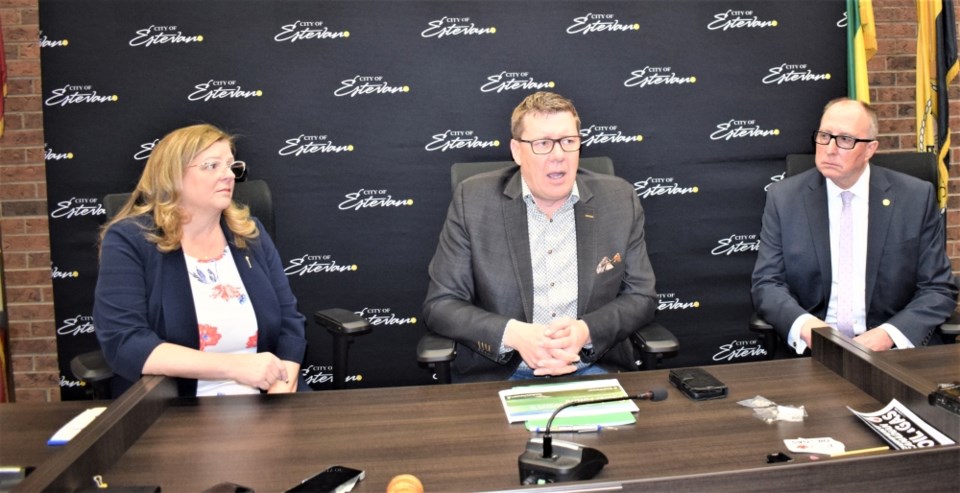Those who were hoping for some kind of history-making announcement by Premier Scott Moe when he was in Estevan on Friday were likely disappointed.
The premier finally made the trek down here. It's believed to be the first time he has been here for a public gathering since late February 2020, prior to the COVID-19 pandemic restrictions taking hold.
And while we know he has a hectic schedule and a million things to worry about, his appearance was long overdue. (He has made other appearances in the region in the past year. Not sure why smaller communities in the southeast have had public appearances by the premier ahead of Estevan).
Anyways, some might have hoped for something big considering his 38-month absence. But what we largely received was a rehash of Moe's statements from earlier in the week at a press conference in Regina.
The predictions from that presser in Regina were rather bleak. Thanks to the incoming Clean Electricity Regulations, much of Saskatchewan's power sources could be shut down by 2035. We know that the feds say no to conventional coal-fired power starting in 2030. But now the province is sounding the alarm about natural gas being out of the equation in 2035.
To bring the power grid up to snuff, Moe says the provincial government could be looking at our power bills doubling or even tripling.
Of course, the feds want us to turn more towards renewables, such as solar and wind power, which don't work as a baseload power options, and often don't work as a secondary choice. The federal government likes hydroelectricity as a baseload choice, but it's not a realistic option in many jurisdictions, including Saskatchewan. (But it works well in provinces where the Liberals have a strong support base).
Small modular reactors? Well, the potential is there, but the process to get such a facility is lengthy, and SaskPower says we're looking at 2034, at the earliest, before one of these is constructed.
Importing power? You'll have to turn to an area that is close by and that has power to spare. And frankly, bringing in electricity from another area just feels like failure.
Is the feds' mandate to have a net-zero power grid by 2035 unrealistic? Absolutely. It might be possible in some areas, but not all.
The premier can talk about a made-in-Saskatchewan model to reach the net-zero target by 2050, but we know that the feds will block it, just as they have stood in the way of other efforts by the province to flex its autonomy.
And of course, we're thrust in the middle of it here because coal – that affordable, consistent, job-creating baseload power source that can now be transformed into a clean source thanks to the advent of carbon capture, utilization and storage – is on the government's no-go list.
The uncertainty is weighing hard on people here. The premier heard that message repeatedly on Friday. These people represent unions that have worked hard to power the province for years. They deserve stability, not a murky future. Our community deserves better than question marks.
As for the premier, he needs to be here more often. At least a couple of times a year. It doesn't have to be because of the future of coal-fired power or to promote carbon capture, utilization and storage technology, although those will invariably be discussed.
But there are a lot of things happening down here that the premier could visit and promote. Or he could just make a big appearance at a Sask. Party fundraising dinner and meet with constituents and supporters.
Hopefully, the next time he's here, he'll bring something more in the way of an announcement, and it will be for more felicitous reasons.



